Which camera do you need to get started?
Astrophotography - surely only possible with expensive special cameras - after all, our targets are small and faint. Or am I mistaken?
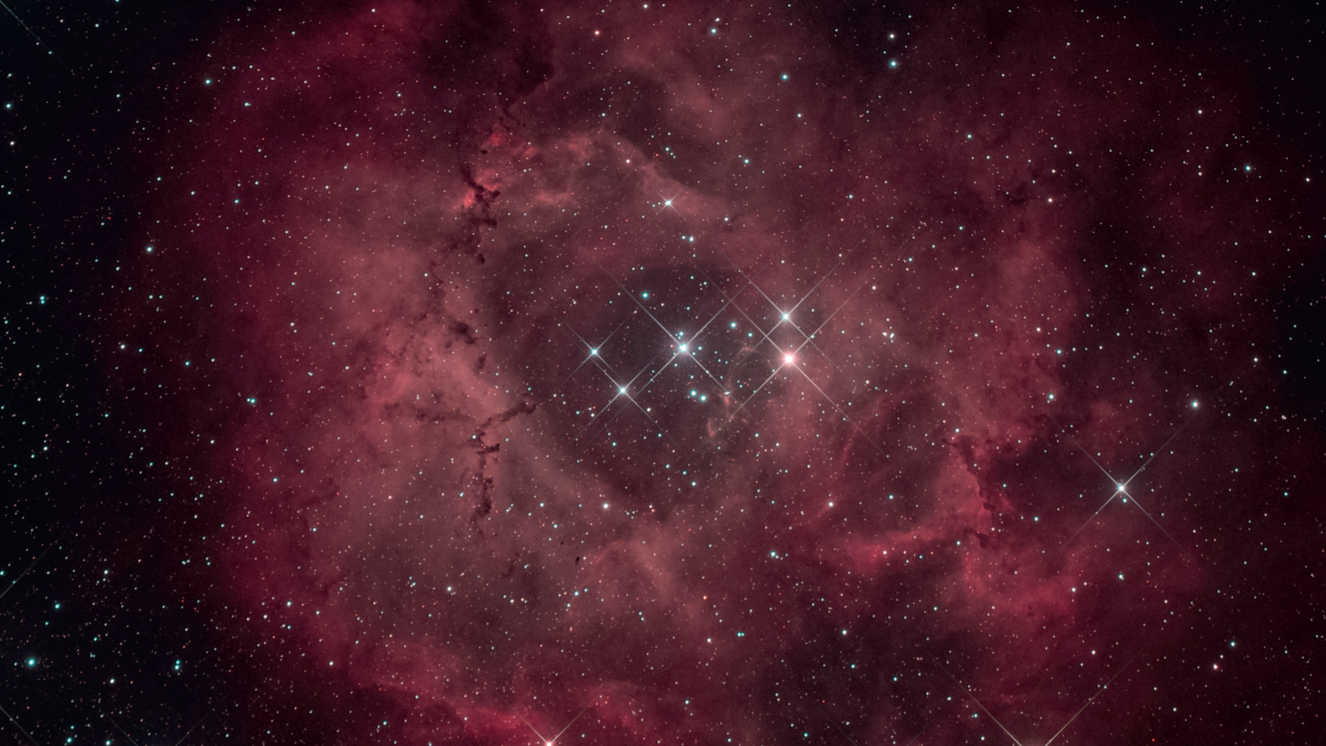 Depending on the object to be photographed, different cameras offer varying levels of success: for this image of the Rosette Nebula with the central cluster NGC 2244, a Hα-modified Canon D6 DSLR was used, together with a telescope with a focal length of 530 mm (aperture ratio f/5). The picture consists of 10 images, each with an exposure time of 450 seconds (at ISO 1600), giving a total exposure time of 75 minutes. U. Dittler
Depending on the object to be photographed, different cameras offer varying levels of success: for this image of the Rosette Nebula with the central cluster NGC 2244, a Hα-modified Canon D6 DSLR was used, together with a telescope with a focal length of 530 mm (aperture ratio f/5). The picture consists of 10 images, each with an exposure time of 450 seconds (at ISO 1600), giving a total exposure time of 75 minutes. U. DittlerThe majority of photographs across the world are taken with smartphone cameras. But are they also suitable for astrophotography? Or do you actually need expensive digital SLR cameras or even cooled CCD cameras? The article will explain which camera you can use to create your very first astronomy images.
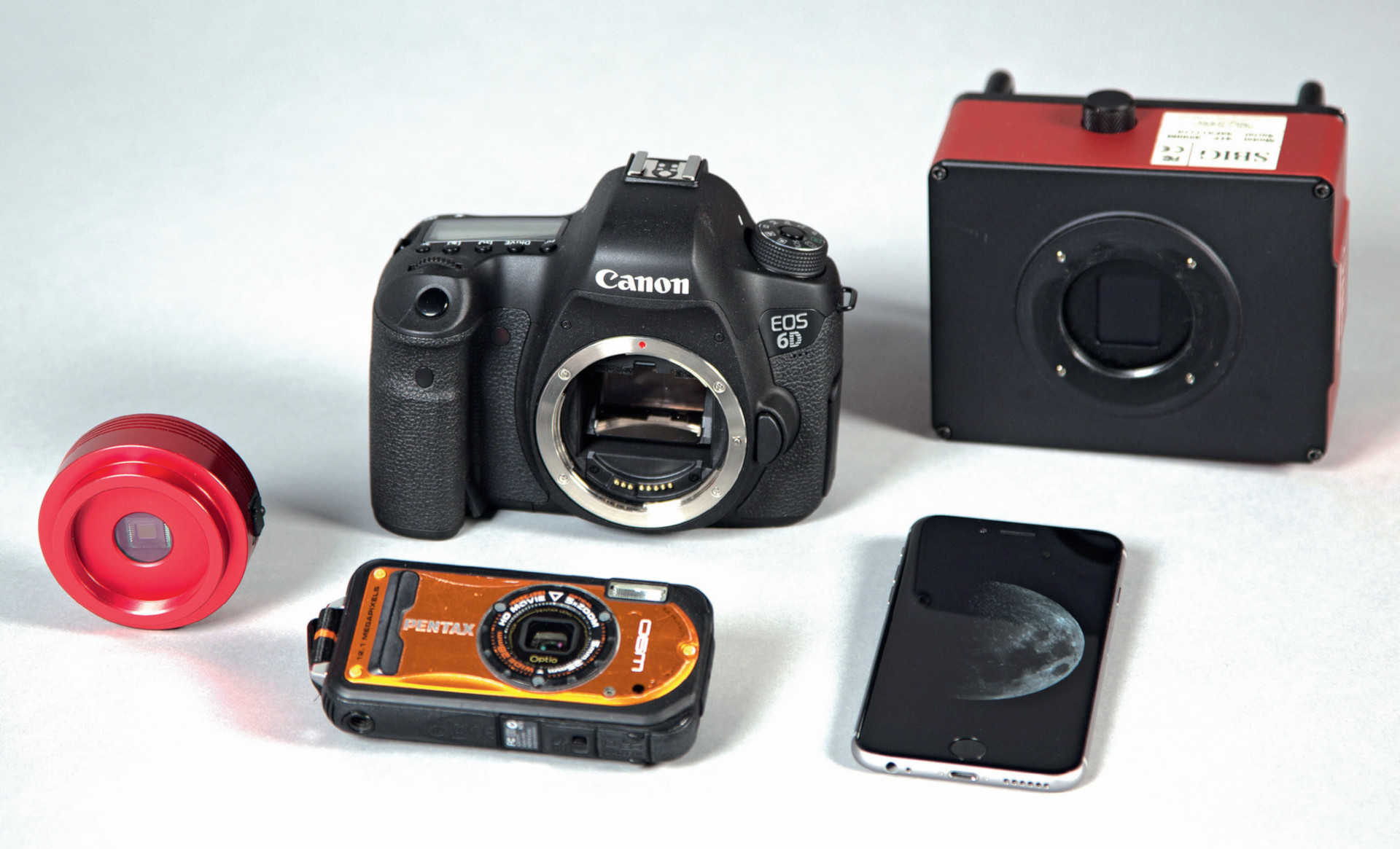 There's a huge choice of cameras available, ranging from smartphone cameras to classic compact cameras and uncooled CCD cameras, to digital SLR cameras and cooled Astro CCD cameras. Due to their differing strengths and weaknesses, these various types of cameras are suitable for different astrophotography applications in different ways – but a simple camera is actually all you need to get you started. U. Dittler
There's a huge choice of cameras available, ranging from smartphone cameras to classic compact cameras and uncooled CCD cameras, to digital SLR cameras and cooled Astro CCD cameras. Due to their differing strengths and weaknesses, these various types of cameras are suitable for different astrophotography applications in different ways – but a simple camera is actually all you need to get you started. U. DittlerCCD and CMOS sensors’ performance has increased significantly as a result of rapid developments in recent years, so that you can now take impressive astrophotography images with simple cameras. When starting out in astrophotography, you'll often find that you can use the cameras you probably already own.
Photographs of the Moon with a smartphone camera
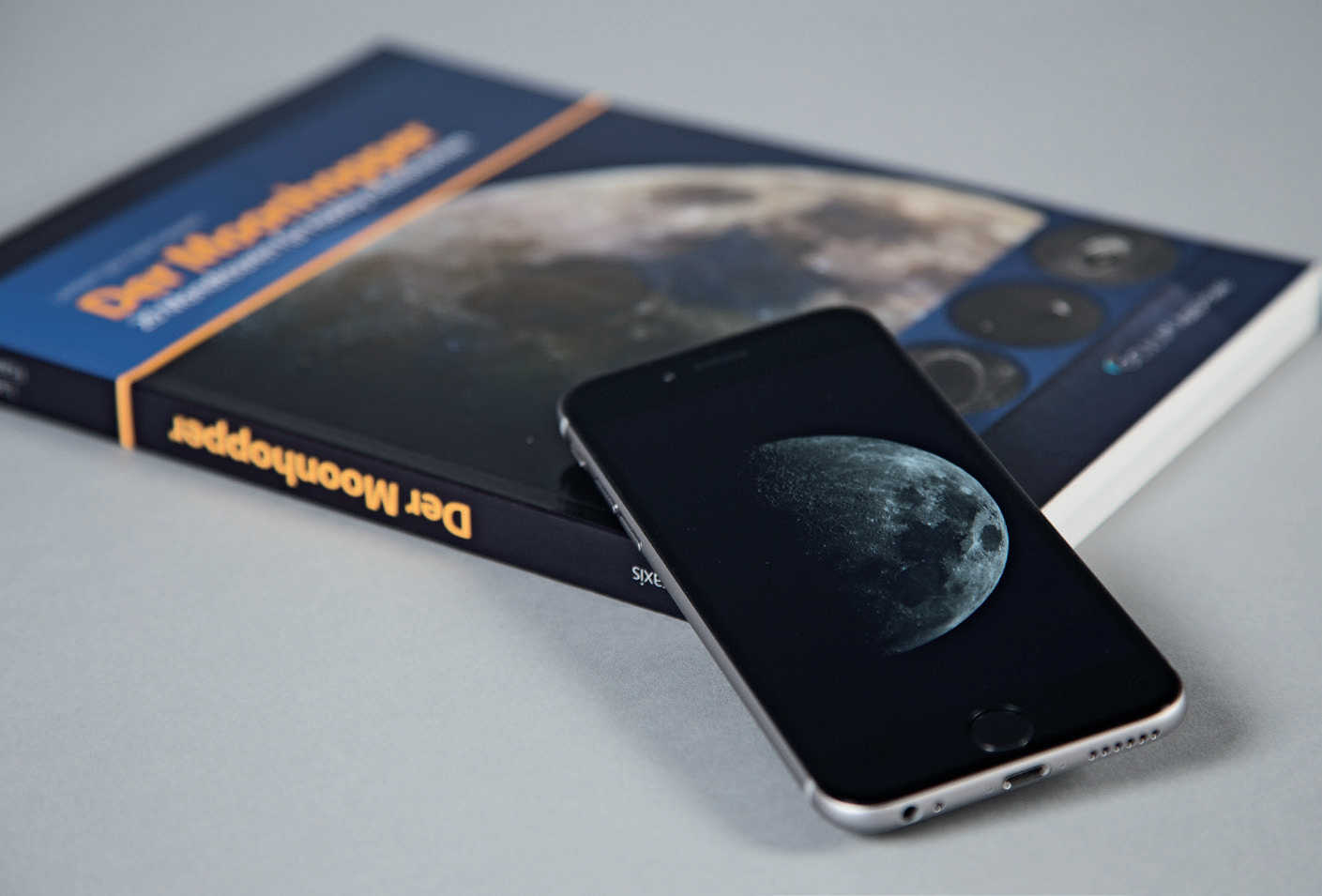 The cameras built into smartphones are getting better and better. Nowadays, these cameras can be used to photograph the brighter objects of our solar system – though they’re rather less suitable for deep sky photography. U.Dittler
The cameras built into smartphones are getting better and better. Nowadays, these cameras can be used to photograph the brighter objects of our solar system – though they’re rather less suitable for deep sky photography. U.DittlerEven though smartphone cameras were designed for casual everyday photography, they are also suited for an introduction to astrophotography! Since you cannot remove a smartphone camera lens, you’ll need to hold the camera behind your telescope's eyepiece for photography – or attach it to the eyepiece using an appropriate, low-cost smartphone adapter. For your introduction to astrophotography, choose a very bright astronomical object such as the Moon. Align the telescope, select an eyepiece with not too high a magnification, and focus. You can then position your smartphone behind the eyepiece until you see the enlarged image of the Moon on your smartphone screen.
All you need to do is tap on your display in the usual way to select the focus and exposure time and shoot: you have your first astronomy photo! Photographs of bright and large objects such as the Moon are possible with a smartphone camera with a resolution of 8 to 12 or more megapixels at chip sizes of approx. 4.5 mm × 3.5 mm. However, smartphone cameras are usually less suitable for small or faint objects because the focus and exposure cannot be manually controlled and adjusted to the extent required for successful astrophotography.
Planetary photos with CCD cameras
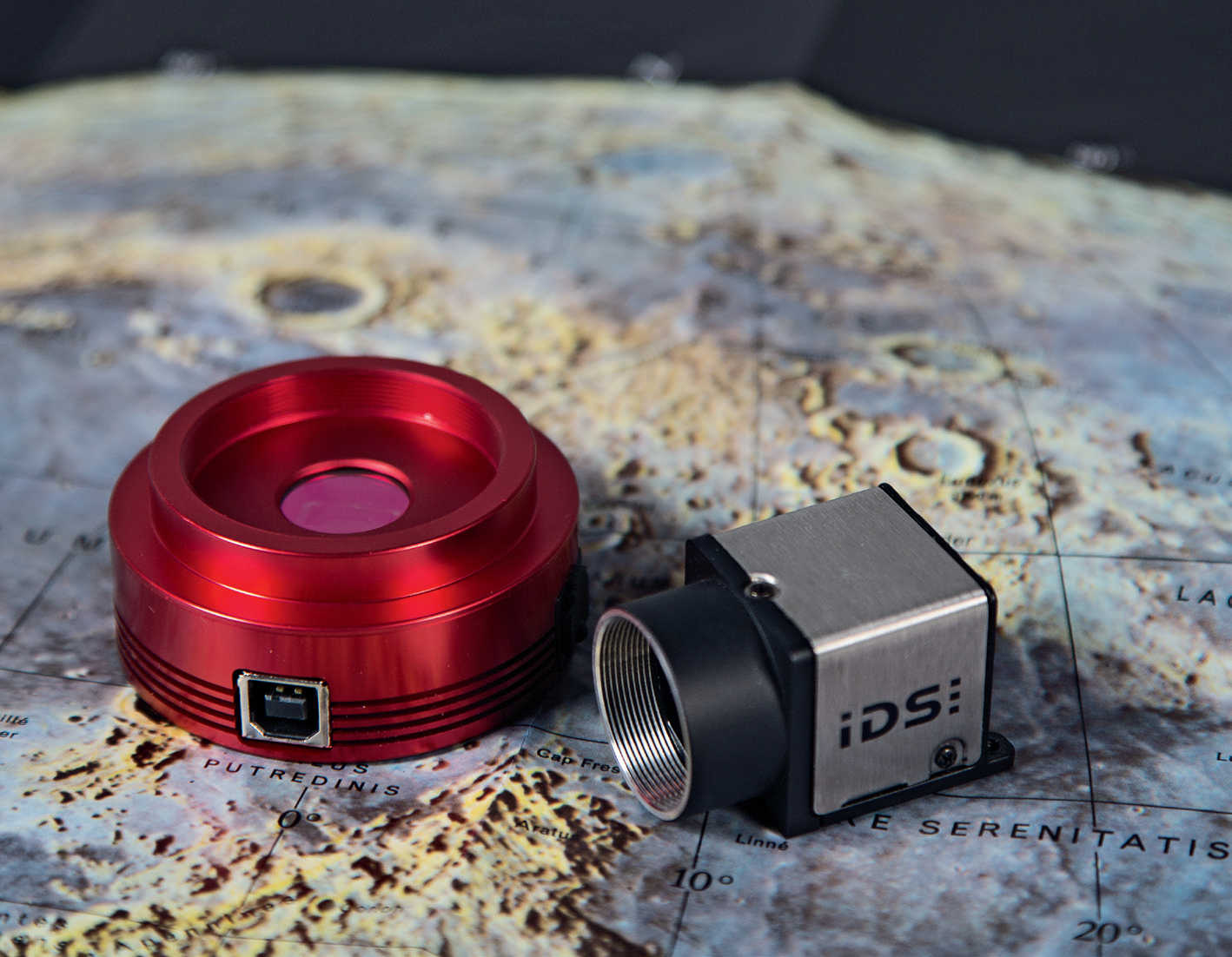 Uncooled CCD cameras have gained acceptance in planetary photography.
Using them, many hundred images can be captured within a short period of time in video format, and then processed on your PC. U. Dittler
Uncooled CCD cameras have gained acceptance in planetary photography.
Using them, many hundred images can be captured within a short period of time in video format, and then processed on your PC. U. DittlerIf you want to produce better quality images of the Moon, or you want to hunt the planets of our solar system, you can use security cameras optimised for astronomy. These cameras can take hundreds or thousands of images in a short time, from which suitable software will then compile a composite image, which is usually much more detailed than a single image alone.
In order to be able to use uncooled CCD cameras, you’ll need a notebook which not only controls the camera functions, but also stores the large video files. The choice of such cameras is large, but they all have relatively small chips, ranging from 3.1 mm × 2.4 mm to 13.2 mm × 8.8 mm.
SLR cameras: the Swiss army knife of the camera world
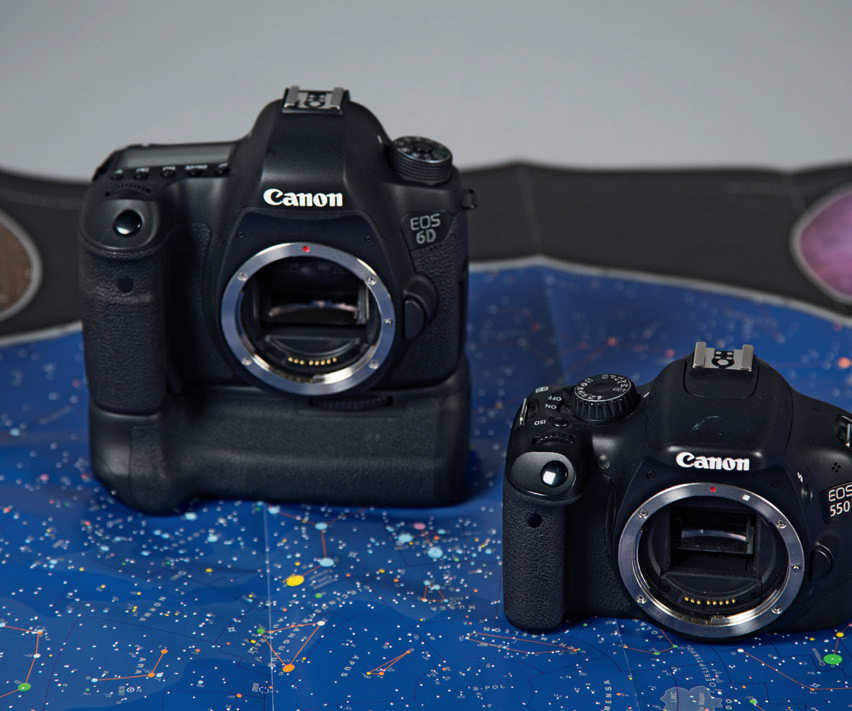 SLR cameras are suitable
for many astrophotography applications
– and there are many options: They range from
low-cost models with APS-C sensors to
high-quality full frame cameras with a wide
range of functions (the cheaper models are often enough when starting out with astrophotography). U. Dittler
SLR cameras are suitable
for many astrophotography applications
– and there are many options: They range from
low-cost models with APS-C sensors to
high-quality full frame cameras with a wide
range of functions (the cheaper models are often enough when starting out with astrophotography). U. DittlerDigital single lens reflex (DSLR) cameras are widely used among ambitious photographers because of their flexibility and universality. DSLRs allow you to change lenses so that a telescope can also be adapted to act as a lens. In addition, a wide range of accessories are available for a wide range of applications, including astrophotography.
DSLR cameras are therefore wholly suitable for most astrophotography requirements: the cameras offer sufficient manual setting options to adapt the images to the characteristics of the chosen astronomical object. And adapting a telescope to act as a super-telephoto lens is usually no problem due to the availability of corresponding telescope or camera adapters.
Digital SLR cameras are available today starting at around €300. Cameras in this price sector use sensors with a size of approx. 15 mm × 23 mm, the so-called APS-C format. Cameras with a sensor size of 24 mm × 36 mm, the classic 35-mm or full frame format, are currently available at prices between €1,750 and €5,000.
The bottom line
For your first steps in astrophotography, the cameras you probably already own - such as the camera in your smartphone - are suitable, which allows you to take your first photos of the surface of the Moon for little additional outlay. If you have aroused a passion for lunar photography and also want to photograph the small and faint planets of our solar system, then you should look out for an uncooled CCD camera. If you also own a DSLR, the door to the premier league of astrophotography – deep sky photography – is open to you!
Author: Ullrich Dittler / Licence: Oculum-Verlag GmbH
